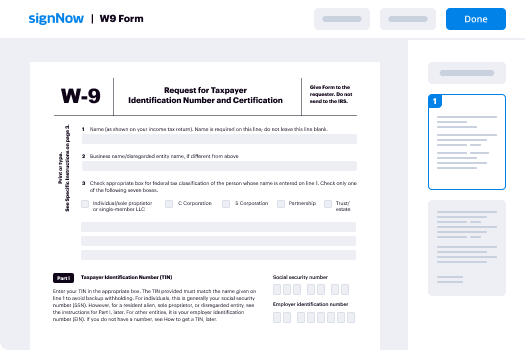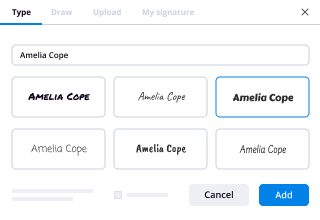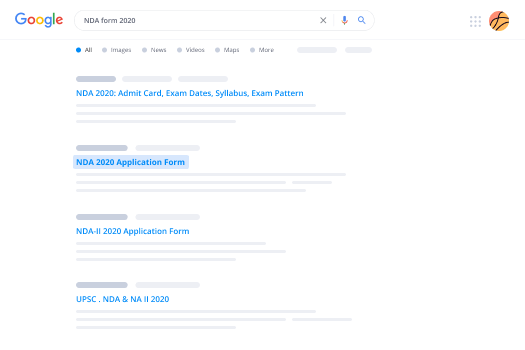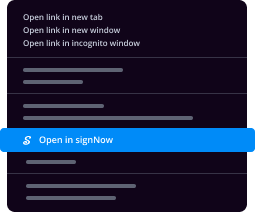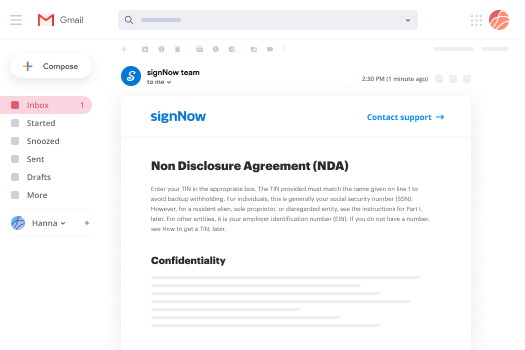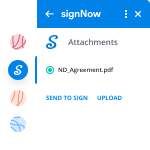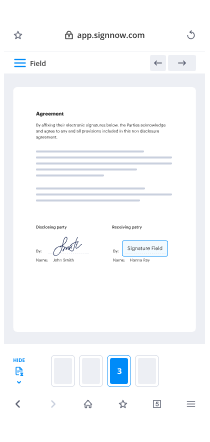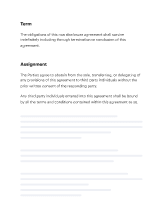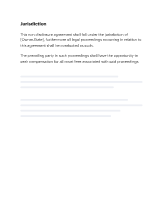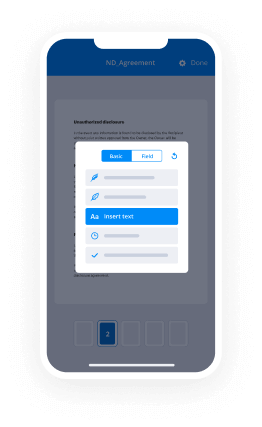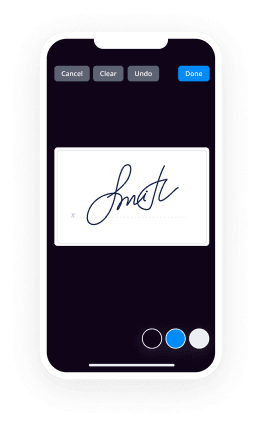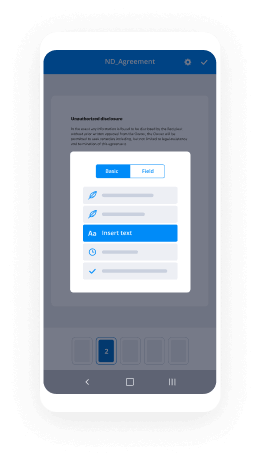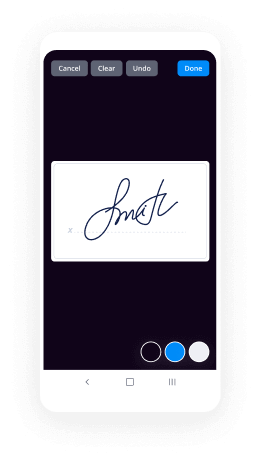Explore Popular eSignature Features: How to Read a Signature
- Quick to start
- Easy-to-use
- 24/7 support
Simplified document journeys for small teams and individuals




We spread the word about digital transformation
Why choose airSlate SignNow
-
Free 7-day trial. Choose the plan you need and try it risk-free.
-
Honest pricing for full-featured plans. airSlate SignNow offers subscription plans with no overages or hidden fees at renewal.
-
Enterprise-grade security. airSlate SignNow helps you comply with global security standards.







Quick guide on how to read a signature
The airSlate SignNow eSignature solution is ready to substitute your handwritten autograph and enhance almost any paper-based, manual tasks. Signing documents in electronic format saves time, decreases costs, and provides you the versatility to approve deals and official forms from anywhere and anytime, on any device. Read on to discover tips on how to start enhancing your approval workflows and sign and send out documents for signing electronically.
Follow the steps listed below to learn how to read a signature:
- Launch your web browser and visit signnow.com.
- Sign up for a free trial run or log in with your electronic mail or Google/Facebook credentials.
- Select User Avatar -> My Account at the top-right corner of the webpage.
- Modify your User Profile by adding personal information and changing configurations.
- Create and manage your Default Signature(s).
- Get back to the dashboard webpage.
- Hover over the Upload and Create button and choose the appropriate option.
- Click on the Prepare and Send button next to the document's name.
- Type the email address and name of all signers in the pop-up box that opens.
- Make use of the Start adding fields menu to proceed to modify file and self sign them.
- Click SAVE AND INVITE when completed.
- Continue to customize your eSignature workflow employing extra features.
It can't get any easier to learn how to read a signature than it is with airSlate SignNow. Make your profile, modify and sign templates, ask for signatures, and keep track of every action taken to your documents.
How it works
Rate your experience
What is the how to read a signature
The document titled "how to read a signature" serves as a guide for interpreting the elements and characteristics of a signature. Understanding a signature is essential in various contexts, including legal agreements, contracts, and personal identification. It typically includes the signer's name, which may be stylized, along with additional elements such as initials, symbols, or flourishes that reflect the individual's identity. Recognizing these components is crucial for verifying authenticity and intent.
Key elements of the how to read a signature
When analyzing a signature, several key elements should be considered:
- Name: The most prominent part of a signature, usually the full name or initials.
- Style: The unique way in which the letters are formed, which can indicate personality traits.
- Legibility: Some signatures are clearly written, while others are more abstract, affecting their readability.
- Flourishes: Additional decorative strokes or symbols that can add uniqueness to the signature.
- Pressure: The amount of pressure applied during signing can reveal emotions or intent.
Steps to complete the how to read a signature
To effectively read a signature, follow these steps:
- Examine the name: Identify the full name or initials present in the signature.
- Analyze the style: Look for unique formations of letters and any distinctive characteristics.
- Check for legibility: Determine how easy or difficult it is to read the signature.
- Observe any flourishes: Note any additional elements that enhance the signature's uniqueness.
- Consider the pressure: Assess the pressure points to gauge the signer's emotional state during signing.
Legal use of the how to read a signature
Understanding how to read a signature is vital in legal contexts. Signatures often serve as a form of consent or agreement to the terms outlined in a document. In legal proceedings, the authenticity of a signature can be challenged, making it essential to accurately interpret its elements. Courts may rely on signature analysis to determine the validity of contracts, wills, and other legal documents. Ensuring that signatures are properly understood can help prevent disputes and uphold the integrity of agreements.
Sending & Signing Methods (Web / Mobile / App)
With airSlate SignNow, users can easily send and sign documents electronically, streamlining the signature process. The platform provides multiple methods for sending documents for signature:
- Web: Users can upload documents directly to the airSlate SignNow website and send them for signature.
- Mobile: The mobile app allows users to sign documents on the go, ensuring accessibility anytime, anywhere.
- App Integration: Users can integrate airSlate SignNow with various applications, enabling seamless document management and signature requests.
Examples of using the how to read a signature
Understanding how to read a signature can be applied in various scenarios:
- Contract Verification: Ensuring that the signature on a contract matches the known signature of the individual.
- Identity Confirmation: Verifying a person's identity by comparing signatures on identification documents.
- Fraud Prevention: Detecting forgeries by analyzing discrepancies between signatures.
-
Best ROI. Our customers achieve an average 7x ROI within the first six months.
-
Scales with your use cases. From SMBs to mid-market, airSlate SignNow delivers results for businesses of all sizes.
-
Intuitive UI and API. Sign and send documents from your apps in minutes.
FAQs
-
What is the best way to learn how to read a signature?
To effectively learn how to read a signature, familiarize yourself with common signature styles and variations. Practice by comparing signatures against known examples to identify unique characteristics. Additionally, using tools like airSlate SignNow can help you analyze and validate signatures digitally.
-
How does airSlate SignNow help in understanding how to read a signature?
airSlate SignNow provides features that allow users to view and verify signatures easily. The platform offers tools for signature comparison and validation, making it simpler to understand how to read a signature accurately. This ensures that you can trust the authenticity of signed documents.
-
Are there any costs associated with learning how to read a signature using airSlate SignNow?
While learning how to read a signature is free, using airSlate SignNow comes with subscription plans that vary based on features. These plans are cost-effective and provide access to advanced tools that enhance your signature reading capabilities. You can choose a plan that fits your business needs and budget.
-
What features does airSlate SignNow offer for signature verification?
airSlate SignNow includes features such as signature comparison, audit trails, and document tracking. These tools are essential for anyone looking to understand how to read a signature effectively. By utilizing these features, you can ensure the integrity of your signed documents.
-
Can I integrate airSlate SignNow with other applications to assist in reading signatures?
Yes, airSlate SignNow offers integrations with various applications, enhancing your ability to read and manage signatures. By connecting with tools like CRM systems or document management software, you can streamline your workflow and improve your understanding of how to read a signature in different contexts.
-
What are the benefits of using airSlate SignNow for signature management?
Using airSlate SignNow for signature management provides numerous benefits, including increased efficiency and security. The platform simplifies the process of sending and receiving signed documents, allowing you to focus on learning how to read a signature rather than getting bogged down in paperwork. This leads to faster transactions and improved customer satisfaction.
-
Is there a trial period for airSlate SignNow to practice reading signatures?
Yes, airSlate SignNow offers a free trial period that allows you to explore its features and practice how to read a signature. This trial gives you hands-on experience with the platform, enabling you to understand its capabilities before committing to a subscription. It's a great way to see how it can benefit your signature management needs.





























